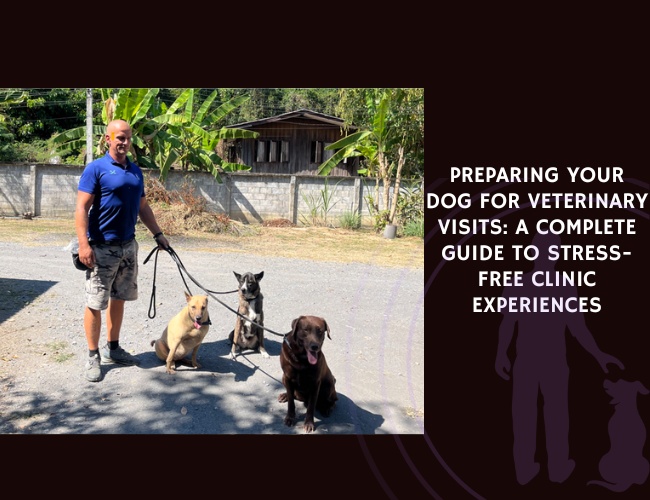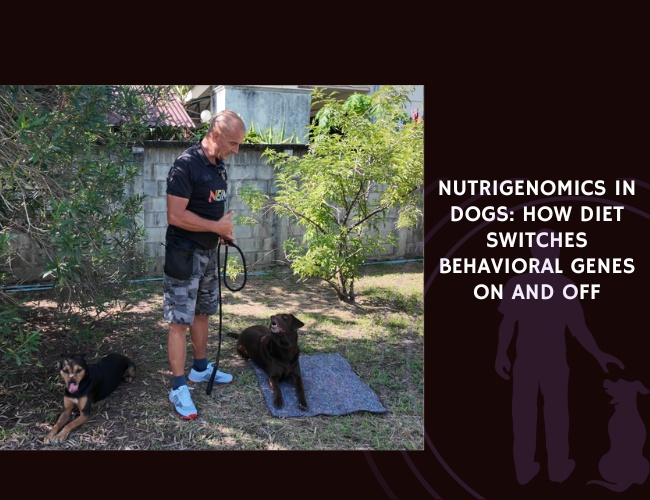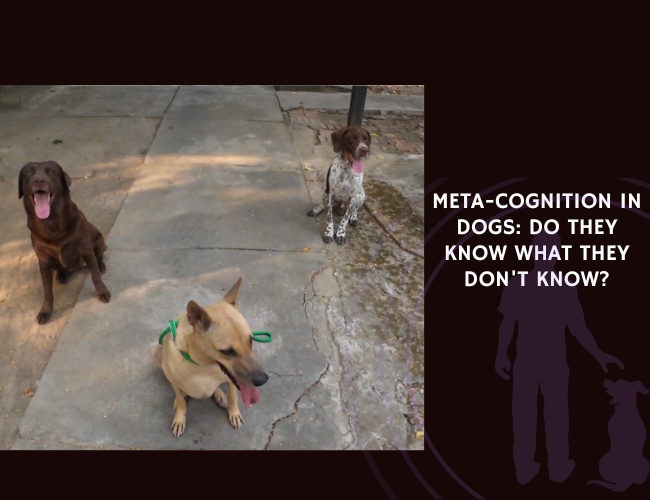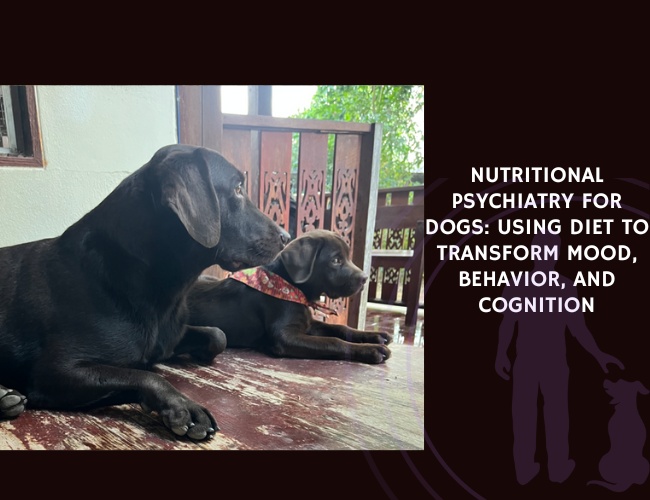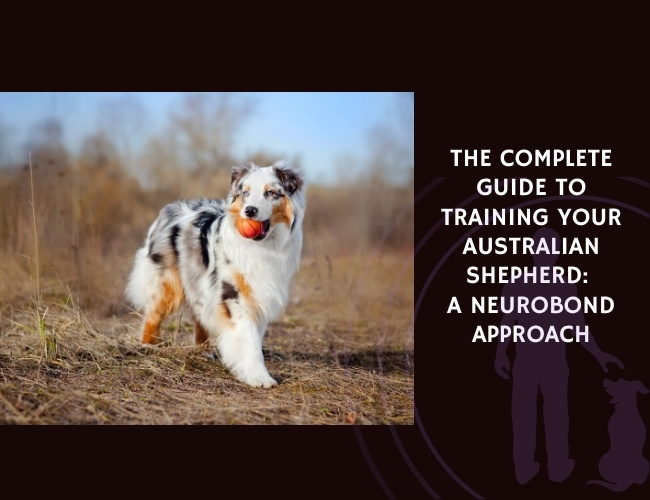Does your furry friend tremble at the mere sight of the veterinary clinic? You’re not alone in this challenge. Research reveals that nearly 80% of dogs show fearful behaviors during veterinary examinations, with many displaying signs of stress before even entering the building. This comprehensive guide will walk you through evidence-based strategies to transform those dreaded vet visits into manageable, even positive experiences for both you and your beloved companion.
The journey toward stress-free veterinary care begins long before you load your dog into the car. From understanding the neurological basis of veterinary fear to implementing cooperative care techniques at home, we’ll explore every aspect of preparing your canine companion for medical care. Whether you’re raising a puppy or helping an adult dog overcome established fears, these scientifically-backed approaches will strengthen your bond while ensuring your pet receives the healthcare they deserve.
Understanding Your Dog’s Veterinary Stress Response
The Reality of Veterinary Fear
Let’s start with a truth that might surprise you: veterinary fear isn’t just “being dramatic” – it’s a complex physiological and psychological response that affects the majority of our canine companions. Studies show that 70% of dogs are reluctant to enter veterinary practices for routine wellness examinations, and fewer than half enter calmly. This means if your dog shows signs of stress, they’re actually in the majority, not the exception.
The stress response begins the moment your dog recognizes the familiar route to the clinic. Their amygdala – the brain’s fear center – triggers a cascade of stress hormones that prepare their body for perceived danger. You might notice your usually confident companion beginning to pant, drool, or whine as you pull into the parking lot. These aren’t signs of misbehavior; they’re evolutionary survival mechanisms that helped their ancestors avoid threats.
Physical manifestations of stress emerge in predictable patterns. Research documents that approximately one-third of dogs experience heart rates exceeding 180 beats per minute during examinations – with some reaching an alarming 230 bpm while at rest. To put this in perspective, a relaxed dog’s heart rate typically ranges from 60-140 bpm depending on size. This dramatic increase isn’t just uncomfortable; it can affect the accuracy of diagnostic procedures and make routine care more challenging for everyone involved.
Decoding Stress Signals
Understanding your dog’s stress communication helps you recognize when they need support. Dogs express anxiety through multiple channels simultaneously, creating what behaviorists call a “stress signature” unique to each individual. Let’s explore these signals so you can better advocate for your four-legged friend:
Behavioral indicators often appear in clusters:
- Trembling or shaking that starts subtly and intensifies
- Orientation toward exits, pulling toward doors
- Vocalizations ranging from soft whimpers to sharp yelps
- Freezing in place or sudden immobility
- Excessive panting unrelated to temperature
- Displacement behaviors like excessive yawning or lip licking
Physiological markers tell an even deeper story. Beyond the racing heart we mentioned, stressed dogs experience elevated cortisol levels – measurable through saliva samples – that can persist for hours after the visit ends. Their pupils dilate, body temperature fluctuates, and heart rate variability decreases. These changes aren’t just momentary discomfort; they represent genuine physiological stress that impacts your dog’s overall wellbeing.
Some dogs escalate to defensive behaviors when fear overwhelms their coping mechanisms. Growling, snapping, or lunging aren’t signs of a “bad dog” – they’re desperate attempts to create distance from perceived threats. Recognizing these escalation patterns helps prevent situations where your dog feels they must defend themselves, protecting both them and veterinary staff from potential injury.
Why Some Dogs Struggle More Than Others
Not all dogs experience veterinary visits equally, and understanding risk factors helps explain why your particular pup might find clinic visits especially challenging. Research identifies several key predictors that influence how dogs respond to veterinary care:
Breed group characteristics account for 27% of fear variance during examinations. Herding breeds, with their heightened environmental awareness, often show more stress than sporting breeds. Toy breeds may feel more vulnerable due to their size, while guardian breeds might struggle with strangers handling them. Understanding your breed’s tendencies isn’t about accepting fear as inevitable – it’s about tailoring your approach to their specific needs.
Early life experiences profoundly shape veterinary responses. Dogs acquired from shelters, pet stores, or as strays show significantly higher fear levels than those from reputable breeders or stable homes. This isn’t because shelter dogs are “damaged” – they may simply have missed critical socialization opportunities or experienced stressful medical procedures without proper support. The good news? With patience and the right techniques, these dogs can learn to trust veterinary care.
Owner experience plays a surprising role, with first-time dog owners more likely to have fearful pets during examinations. This correlation likely reflects missed opportunities for early positive veterinary experiences and inadvertent reinforcement of anxious behaviors. If you’re a new dog parent, don’t feel discouraged – awareness is the first step toward improvement. 🐾
The Science of Fear Memory and Trauma Response
How Veterinary Trauma Develops
A single negative veterinary experience can create lasting neurochemical changes in your dog’s brain. When something frightening happens – perhaps rough handling during a procedure or pain from an injection – the amygdala encodes this memory with exceptional clarity. This “fear learning” served an important evolutionary purpose, helping animals avoid genuine dangers. Unfortunately, your dog’s brain can’t distinguish between necessary medical care and actual threats.
The hippocampus, responsible for contextual memory, links the fear response not just to the specific procedure but to the entire environment. The smell of disinfectant, the texture of the exam table, even the sound of the automatic doors – all become predictors of danger in your dog’s mind. This generalization explains why some dogs begin showing stress before even entering the building; they’ve learned to anticipate the experience based on environmental cues.
Stress hormones released during traumatic experiences actually strengthen these fear memories. Cortisol and adrenaline act like a highlighter on the brain’s memory systems, ensuring your dog vividly remembers every detail of the frightening experience. This biological mechanism, designed to promote survival, makes overcoming veterinary fear particularly challenging without systematic intervention.
Breaking the Fear Cycle
Understanding fear memory helps us appreciate why simple exposure isn’t enough to overcome veterinary anxiety. Taking a fearful dog to the vet repeatedly without addressing their emotional state can actually worsen the problem through a process called sensitization. Each stressful visit reinforces the neural pathways associating veterinary clinics with danger, making future visits progressively more difficult.
The solution lies in creating new, positive neural pathways that compete with fear memories. This process, called memory reconsolidation, occurs when we carefully pair veterinary stimuli with positive experiences. However, timing and intensity matter enormously. Pushing too hard too fast can backfire, while moving too slowly might not create sufficient positive associations to override existing fear.
Neuroplasticity – the brain’s ability to form new connections throughout life – offers hope for even severely fearful dogs. Research shows that consistent, positive experiences can literally rewire fear responses, though older dogs may require more repetitions than puppies. The key is working below your dog’s fear threshold, where learning can occur without triggering panic responses. 🧠
Cooperative Care: Revolutionizing Veterinary Preparation
Understanding Cooperative Care Philosophy
Cooperative care represents a paradigm shift in how we approach animal handling and medical procedures. Rather than relying on restraint and “getting it done quickly,” this approach teaches dogs to actively participate in their own care. Imagine your dog voluntarily offering their paw for nail trims or resting their chin on your hand to signal readiness for an ear examination. This isn’t fantasy – it’s the reality for dogs trained with cooperative care principles.
The foundation of cooperative care rests on three pillars: choice, clarity, and predictability. Choice means your dog can opt in or out of procedures through trained behaviors. Clarity comes from consistent cues and patterns that help your dog understand what’s happening. Predictability reduces anxiety by eliminating surprises and giving your dog control over the pace of interactions.
This approach fundamentally changes the power dynamic during veterinary care. Instead of being subjected to procedures, your dog becomes a willing participant. They learn that cooperation leads to rewards, that they can communicate boundaries, and most importantly, that their comfort matters. This shift from learned helplessness to empowerment can transform even highly fearful dogs.
Implementing Consent Behaviors
Teaching consent behaviors starts with simple foundation skills that build your dog’s confidence and communication abilities. The “chin rest” serves as an excellent starting point – your dog learns to place their chin in your hand or on a surface to indicate readiness for handling. When they lift their head, the procedure pauses. This simple behavior gives your dog a voice in their care.
Training progression follows a systematic approach:
- Teach the basic chin rest behavior using positive reinforcement
- Gradually add duration, building to 10-30 seconds
- Introduce gentle touches while maintaining the chin rest
- Progress to examination-style handling
- Add veterinary equipment (stethoscope, otoscope) at a distance
- Combine equipment with handling
Start training sessions when your dog is calm and motivated by treats or play. Keep initial sessions under five minutes to maintain engagement and prevent frustration. Success comes from hundreds of positive repetitions, not rushing toward the end goal. Remember, you’re not just teaching a behavior – you’re building trust and communication channels that will serve your dog throughout their life.
Muzzle Training as Empowerment
Let’s address an uncomfortable truth: even the gentlest dog might bite when experiencing fear or pain. Muzzle training isn’t about labeling your dog as dangerous – it’s about ensuring everyone’s safety while reducing stress for all involved. A properly muzzle-trained dog views their muzzle as a predictor of good things, not a punishment or restraint.
The key to successful muzzle training lies in creating positive associations from the very beginning. Start by presenting the muzzle with high-value treats placed inside, allowing your dog to voluntarily insert their nose to retrieve rewards. Progress gradually through these stages:
Week 1-2: Muzzle appears, treats rain from the sky. Your dog learns that the muzzle predicts wonderful things without any pressure to interact with it.
Week 3-4: Treats appear inside the muzzle. Your dog chooses to put their nose in to retrieve rewards, building positive associations with the sensation.
Week 5-6: Brief strap fastening (1-2 seconds) followed by treat parties. Gradually increase duration as your dog shows comfort.
Week 7-8: Wearing the muzzle during fun activities like walks or training games. The muzzle becomes associated with enjoyable experiences, not just veterinary visits.
This process typically takes 6-8 weeks for a comfortable, confident muzzle-trained dog. Rushing risks creating negative associations that are difficult to overcome. When done correctly, many dogs actively seek out their muzzle, viewing it as equipment that predicts adventures and rewards. 😄

Creating Positive Veterinary Experiences at Home
Mock Examinations and Handling Practice
Your living room can become a training ground for veterinary success through regular mock examinations. These practice sessions teach your dog that handling is safe, predictable, and often followed by rewards. Start with brief, gentle touches and gradually work toward more thorough examinations that mirror what your veterinarian performs.
Begin with basic body handling that most dogs tolerate well. Gently touch your dog’s shoulders, back, and sides while they’re relaxed. Pair each touch with calm praise and occasional treats. As comfort increases, progress to more sensitive areas like paws, ears, and tail. The goal isn’t to complete a full examination immediately but to build positive associations with being touched.
Equipment familiarization adds authenticity to your practice sessions. Introduce common veterinary tools gradually:
- Stethoscope: Let your dog sniff it, then gently place it on less sensitive areas
- Thermometer: Practice holding it near your dog without insertion
- Otoscope: Shine the light near (not in) ears initially
- Scale: Make standing on bathroom scales a fun trick
Document your dog’s comfort level with different types of handling. This information proves invaluable for your veterinary team, helping them understand where your dog needs extra support. Create a “handling map” noting which areas your dog enjoys being touched and which require more careful approach.
Environmental Desensitization
The veterinary clinic assaults your dog’s senses with unfamiliar stimuli. Preparing for these sensory experiences at home reduces their impact during actual visits. Create a systematic desensitization program addressing each sensory channel:
Olfactory preparation: Veterinary clinics have distinct smells from disinfectants and medical supplies. Ask your clinic for cotton balls with typical cleaning product scents. Start by placing these at a distance during meal times, gradually moving them closer as your dog shows comfort. The goal is neutral or positive associations with these previously novel smells.
Auditory conditioning: Record or find online versions of common clinic sounds – barking dogs, phone rings, door chimes, metal equipment sounds. Play these at barely audible volumes during positive activities like meals or play. Increase volume incrementally over weeks, always staying below your dog’s stress threshold.
Tactile experiences: Different surfaces challenge dogs accustomed to home flooring. Practice on various textures:
- Slippery surfaces (similar to exam tables)
- Elevated platforms (mimicking examination tables)
- Confined spaces (preparing for smaller exam rooms)
- Different flooring materials
Each desensitization session should end on a positive note, with your dog calm and engaged. If you notice stress signals, you’ve progressed too quickly. Back up to the previous successful step and spend more time there before advancing.
Happy Visits Protocol
“Happy visits” revolutionize how dogs perceive veterinary clinics by creating positive experiences without medical procedures. These social visits teach your dog that most clinic visits involve treats, attention, and fun – not injections or uncomfortable examinations. Research shows dogs receiving regular happy visits display significantly less fear during actual medical appointments.
Planning effective happy visits requires coordination with your veterinary team:
- Schedule during quieter periods to minimize overwhelming stimuli
- Keep initial visits brief (5-10 minutes)
- Focus on positive interactions without any medical procedures
- Allow your dog to explore at their own pace
- End while your dog is still comfortable and engaged
During happy visits, veterinary staff might offer treats, play games, or simply chat while your dog explores. Some clinics maintain “happy visit stations” with puzzle feeders or special toys. The key is creating associations between the clinic environment and positive experiences, gradually shifting your dog’s emotional response from fear to anticipation.
Track progress through a happy visit journal. Note your dog’s body language, willingness to enter, interaction with staff, and overall comfort level. Share these observations with your veterinary team so they can adjust their approach accordingly. Most dogs require 5-10 happy visits before showing noticeable improvement in their emotional response to the clinic environment. 🧡
Nutritional and Supplement Support Strategies
Evidence-Based Calming Supplements
Modern veterinary behavioral medicine recognizes the role of nutritional support in managing anxiety. Several supplements show scientific evidence for reducing stress responses, though individual dogs respond differently. Understanding these options helps you make informed decisions with your veterinarian’s guidance.
Alpha-casozepine, derived from milk protein, mimics the calming effects of nursing. This compound works similarly to GABA (gamma-aminobutyric acid), an inhibitory neurotransmitter that reduces neural excitability. Studies demonstrate that dogs receiving alpha-casozepine show decreased anxiety-related behaviors, with effects comparable to some pharmaceutical interventions but without sedation.
L-theanine, found in green tea, promotes relaxation without drowsiness. Research indicates this amino acid reduces fear of strangers and noise phobia in dogs. The mechanism involves increasing alpha brain waves associated with calm alertness while decreasing beta waves linked to anxiety. Dogs typically show improvement within 30-60 minutes of administration, making it useful for acute stressful events.
L-tryptophan serves as a precursor to serotonin, the neurotransmitter regulating mood and anxiety. Studies show behavior-moderating effects when dogs receive diets with increased tryptophan ratios. This approach particularly benefits dogs with chronic anxiety, as consistent supplementation helps maintain stable serotonin levels over time.
Probiotic Support for the Gut-Brain Axis
Emerging research reveals fascinating connections between gut health and emotional wellbeing in dogs. The gut-brain axis – bidirectional communication between the digestive system and central nervous system – influences how dogs process stress and fear. Specific probiotic strains show promise in reducing anxiety-related behaviors.
Bifidobacterium longum BL999 demonstrates particular efficacy in anxious dogs. A study with Labrador Retrievers showed reduced excessive vocalization, jumping, pacing, and spinning after probiotic supplementation. The mechanism likely involves the production of neurotransmitters in the gut and modulation of the stress response through the vagus nerve.
The timing of probiotic supplementation matters. Beginning supplementation 2-4 weeks before anticipated stressful events allows beneficial bacteria to establish and influence the gut-brain axis. Combining probiotics with prebiotic fibers enhances colonization and effectiveness. However, not all probiotics are equal – strain-specific research guides evidence-based selection.
Consider probiotics as part of a comprehensive approach rather than a standalone solution. They work synergistically with behavioral modification, environmental management, and other nutritional supports. Document any changes in your dog’s behavior, appetite, and digestive health when starting probiotics, sharing these observations with your veterinary team.
Therapeutic Diets and Feeding Strategies
Specialized therapeutic diets combine multiple anxiolytic nutrients in balanced formulations. Research on diets containing both L-tryptophan and alpha-casozepine shows decreased owner-reported anxiety behaviors, including stranger-directed fear, non-social fear, and touch sensitivity after 7-week feeding periods. These diets offer convenience and proven efficacy for long-term anxiety management.
Pre-visit feeding strategies significantly impact your dog’s veterinary experience:
- Withhold meals 4-6 hours before appointments to increase food motivation
- Bring high-value treats your dog only receives during veterinary visits
- Use squeeze tubes with pureed treats for continuous reinforcement
- Consider limiting water 2 hours prior to reduce elimination accidents
The “treat gradient” technique involves using increasingly valuable rewards as stress increases. Start with regular kibble in the waiting room, progress to commercial treats during examination, and reserve the highest-value items (cheese, liver, peanut butter) for potentially uncomfortable procedures. This approach maintains motivation even as stress potentially suppresses appetite.
Some dogs benefit from calming supplements given 30-60 minutes before veterinary visits. Combining fast-acting supplements like L-theanine with long-term dietary support provides both immediate and sustained anxiety reduction. Always consult your veterinarian before combining supplements, as interactions can occur. 🐾
Fearful. Overwhelmed. Misunderstood.
Clinic stress is real. Most dogs show fear before exams, their amygdala triggering a cascade of stress hormones. Panting, trembling, or resistance aren’t stubbornness—they’re instinctive survival responses.
Bodies broadcast distress. Elevated heart rates, dilated pupils, and racing cortisol levels reveal profound physiological strain. These markers prove veterinary anxiety is more than behavior—it’s a measurable impact on wellbeing.
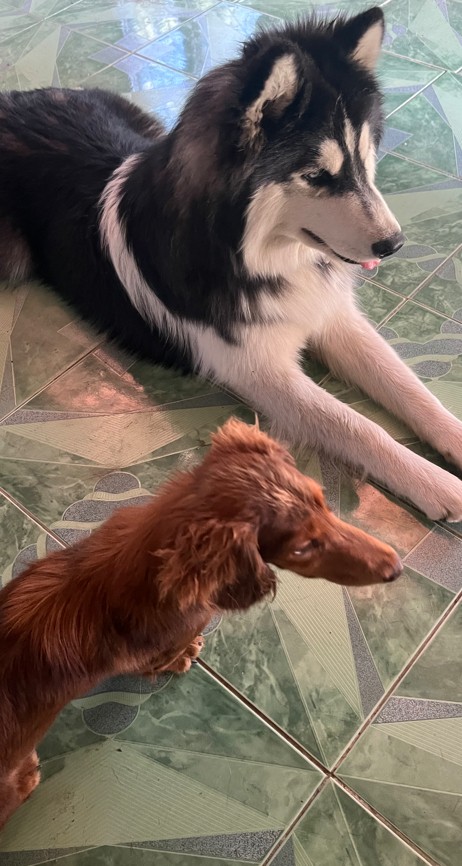
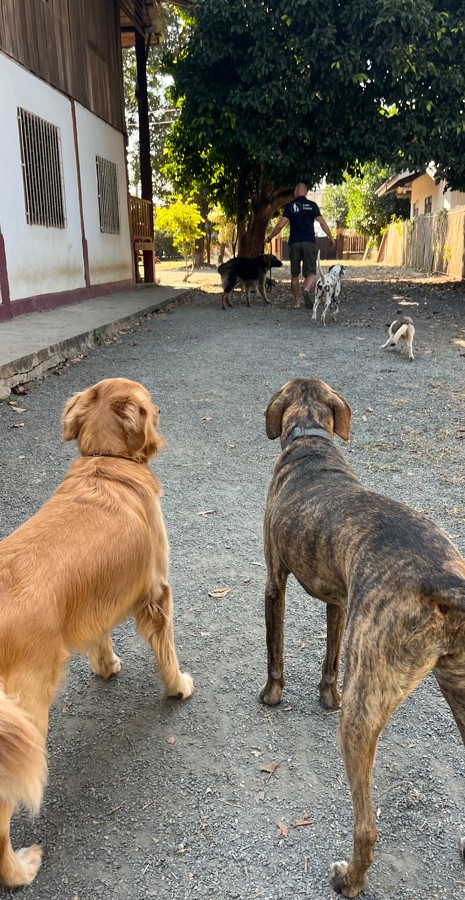

Signals demand empathy. Whining, freezing, or defensive growls communicate fear, not defiance. Recognizing and respecting these stress signatures is the first step toward safer, calmer, and more compassionate veterinary care.
Day-of-Visit Preparation and Management
Morning of the Appointment
The hours before a veterinary visit set the emotional tone for the entire experience. Your morning routine should prioritize calmness and predictability while avoiding actions that might increase anxiety. Even subtle changes in your behavior can alert observant dogs that something unusual is happening.
Environmental preparation begins immediately upon waking:
- Maintain normal morning routines as much as possible
- Avoid excessive reassurance that might signal something concerning
- Use pheromone sprays on bedding and in carriers 15-30 minutes before use
- Play calming music proven to reduce canine stress (classical or specifically designed dog relaxation tracks)
- Keep other pets separated if they increase excitement or anxiety
Physical preparation optimizes your dog’s readiness:
- Provide opportunity for elimination before leaving
- Light exercise can reduce excess energy without causing exhaustion
- Avoid heavy meals but offer small amounts of bland food if needed for medication
- Ensure your dog is clean and groomed to prevent additional handling at the clinic
- Check that collars and leashes are secure and comfortable
Your emotional state profoundly influences your dog’s anxiety levels. Dogs detect subtle changes in our scent, body language, and energy. Practice calm breathing exercises and positive visualization before the appointment. If you’re anxious, your dog will likely mirror that emotional state. Consider having a calmer family member accompany your dog if your own veterinary anxiety is significant.
Transportation Strategies
The car ride represents the transition from safe home environment to potentially stressful clinic setting. Thoughtful transportation management can prevent anxiety escalation before you even arrive at the veterinary clinic.
Carrier preparation for small dogs requires special attention:
- Familiarize dogs with carriers weeks before appointments
- Line carriers with familiar-scented blankets or clothing
- Secure carriers to prevent sliding during transport
- Cover carriers partially with towels to create a den-like environment
- Position carriers where you can offer reassurance without excessive movement
Vehicle environment optimization reduces sensory stress:
- Maintain comfortable temperature (slightly cool is preferable)
- Play calming music or audiobooks at low volume
- Drive smoothly, avoiding sudden stops or turns
- Take the most direct, familiar route when possible
- Park in shaded areas to prevent overheating during wait times
Some dogs benefit from anxiety wraps or thundershirts during transport. These garments apply gentle, constant pressure that can reduce anxiety through deep touch pressure stimulation. Introduce these tools during calm periods first, ensuring your dog associates them with comfort rather than stress.
Waiting Room Wisdom
The waiting room presents unique challenges with unfamiliar animals, sounds, and smells converging in a confined space. Strategic positioning and management can significantly reduce your dog’s stress during this vulnerable period.
Spatial awareness protects your dog from overwhelming stimuli:
- Choose seats away from high-traffic areas
- Position yourself between your dog and other animals
- Face your dog away from the room if they’re visually reactive
- Use your body as a visual barrier when needed
- Consider waiting outside if weather permits and anxiety is severe
Engagement techniques redirect focus from environmental stressors:
- Practice simple, familiar tricks for mental stimulation
- Use puzzle treats or lick mats for distraction
- Maintain calm, quiet conversation with your dog
- Avoid forcing interaction with staff or other clients
- Respect your dog’s need for distance from strangers
Watch for escalating stress signals that indicate your dog needs additional support. Panting, pacing, whining, or attempts to hide suggest the waiting room environment exceeds their coping capacity. Don’t hesitate to inform reception staff if your dog needs accommodations like waiting in the car or immediate room placement.

Working with Your Veterinary Team
Communication is Key
Effective communication with your veterinary team transforms routine visits into collaborative care experiences. Your observations and insights about your dog’s behavior, preferences, and triggers provide invaluable information that helps veterinary professionals adjust their approach for optimal outcomes.
Pre-appointment communication sets expectations and allows preparation:
- Call ahead to discuss your dog’s specific fears or triggers
- Request longer appointment slots if needed for gentle handling
- Ask about quiet appointment times with fewer patients
- Inquire about Fear Free certified staff members
- Share successful strategies from home practice
Creating a behavior profile helps veterinary teams understand your individual dog:
- Document preferred handling techniques
- Note body parts that are sensitive or comfortable
- List effective rewards and motivators
- Describe escalation patterns and warning signs
- Share successful calming strategies
Be honest about your dog’s challenges without apologizing. Veterinary professionals prefer knowing about potential difficulties in advance rather than being surprised during examinations. This isn’t admitting failure – it’s advocating for your dog’s welfare and everyone’s safety.
Advocating for Fear Free Practices
The Fear Free movement has revolutionized veterinary medicine, but implementation varies between clinics. Understanding Fear Free principles empowers you to advocate for these evidence-based practices even in traditional clinic settings.
Environmental modifications you can request:
- Examination on the floor or your lap instead of tables
- Dimmed lighting during procedures
- Non-slip mats on examination surfaces
- Minimal restraint techniques
- Breaks between procedure components
- Owner presence during all non-sterile procedures
Procedural adaptations that reduce stress:
- “Touch gradient” approach starting with less sensitive areas
- Continuous treat delivery during handling
- Sedation for extensive procedures when appropriate
- Alternative examination positions
- Equipment warming before use
- Gentle, gradual movements
Don’t hesitate to ask questions about handling techniques or request modifications if your dog shows distress. A good veterinary team welcomes owner input and adjusts their approach based on individual patient needs. If your current clinic seems resistant to Fear Free principles, consider seeking a certified Fear Free practice in your area.
When Sedation is Kindness
Sometimes, despite our best preparation efforts, conscious veterinary procedures cause unacceptable stress levels. Sedation isn’t failure – it’s a compassionate choice that prioritizes your dog’s emotional wellbeing while ensuring necessary medical care.
Indicators that sedation might be appropriate:
- Extreme fear despite extensive behavioral preparation
- Risk of injury to dog or handlers
- Need for extensive or painful procedures
- History of severe panic responses
- Inability to perform necessary diagnostics due to movement
Modern sedation protocols prioritize minimal effective doses with rapid recovery. Pre-visit pharmaceuticals like gabapentin or trazodone can reduce anxiety without full sedation. These medications work best when given 1-2 hours before appointments, allowing peak effects during examination.
Discuss sedation options proactively with your veterinarian. Understanding available protocols, recovery expectations, and potential side effects helps you make informed decisions. Some dogs benefit from sedation for initial visits while building positive associations, eventually requiring less pharmaceutical support as confidence grows. 🧠
Special Considerations for Different Life Stages
Puppy Preparation: Building Lifetime Resilience
The critical socialization period between 3-14 weeks offers an irreplaceable opportunity to prevent veterinary fear. Puppies during this window are maximally receptive to new experiences, with positive exposures creating lasting neural pathways that promote confidence throughout life.
Early veterinary experiences should prioritize emotional wellbeing over efficiency:
- Schedule “social visits” separate from vaccination appointments
- Allow puppies to explore examination rooms at their own pace
- Pair all handling with high-value rewards
- Keep initial visits brief and positive
- Avoid overwhelming stimuli that might create negative associations
Structured socialization extends beyond the veterinary clinic:
- Handle paws, ears, and mouth daily during calm periods
- Practice gentle restraint for gradually increasing durations
- Introduce veterinary equipment as toys before medical use
- Invite friends to perform mock examinations
- Attend puppy classes that include handling exercises
Research shows that puppies fearful during veterinary visits at 2-4 months often remain fearful as adults without intervention. However, puppies receiving systematic positive veterinary experiences develop resilience that persists throughout life. Every positive early experience is an investment in your dog’s future medical care.
Senior Dogs: Compassionate Accommodations
Aging dogs face unique veterinary challenges requiring thoughtful adaptations. Arthritis makes positioning uncomfortable, cognitive changes affect learning capacity, and sensory decline increases vulnerability to startling stimuli. These factors don’t mean senior dogs can’t have positive veterinary experiences – they simply need modified approaches.
Physical accommodations address age-related limitations:
- Extra time for position changes
- Additional padding on examination surfaces
- Ramps instead of lifting when possible
- Examination modifications for mobility issues
- Temperature regulation for thin or arthritic dogs
- Frequent breaks during procedures
Cognitive considerations respect mental changes:
- Consistent routines reduce confusion
- Familiar people provide security
- Slower approach to new experiences
- Visual or tactile cues if hearing diminishes
- Patience with processing delays
- Recognition that behavior changes might indicate pain
Senior dogs with established veterinary fear require especially gentle approaches. While neuroplasticity continues throughout life, older dogs need more repetitions to form new associations. Focus on management and comfort rather than expecting complete behavioral transformation. Quality of life takes precedence over perfect compliance.
Rescue Dogs: Healing Unknown Histories
Dogs from rescue situations often arrive with unknown medical histories and potential trauma from past veterinary experiences. These resilient survivors need extra support developing trust in medical care. Patience, consistency, and celebration of small victories guide the rehabilitation process.
Trust-building foundations precede veterinary preparation:
- Establish general handling comfort at home
- Build confidence through positive training
- Create predictable daily routines
- Develop communication through consent behaviors
- Strengthen your bond before introducing medical contexts
Graduated exposure respects potentially traumatic histories:
- Start with drive-by visits to the clinic
- Progress to parking lot treats
- Advance to lobby visits without entering treatment areas
- Schedule multiple happy visits before medical appointments
- Consider sedation for initial necessary procedures
Unknown triggers may surface unexpectedly. A specific smell, sound, or touch might evoke powerful fear responses. Document these reactions without judgment, sharing observations with your veterinary team. Understanding triggers helps everyone avoid unnecessary stress while building new, positive associations.
Measuring Progress and Adjusting Strategies
Creating Baseline Assessments
Documenting your starting point provides crucial information for tracking improvement and identifying effective interventions. Objective measurement prevents discouragement during plateaus and celebrates incremental progress that might otherwise go unnoticed.
Behavioral scoring systems quantify fear responses:
- Rate stress behaviors on 1-10 scales
- Document frequency of specific behaviors
- Note duration of recovery after visits
- Track willingness to enter clinic
- Measure approach/avoidance behaviors
- Record physical symptoms like trembling or panting
Physiological measurements provide objective data:
- Resting heart rate before and after visits
- Recovery time to baseline after procedures
- Appetite changes following appointments
- Sleep disturbances after veterinary visits
- Elimination accidents related to stress
Create a simple tracking spreadsheet or journal documenting each veterinary interaction. Include preparation strategies used, environmental factors, personnel involved, procedures performed, and behavioral responses. Patterns emerge over time, revealing what helps and what doesn’t for your individual dog.
Recognizing Incremental Improvements
Progress in veterinary fear reduction rarely follows a linear path. Dogs might show improvement in some areas while others remain challenging. Celebrating small victories maintains motivation during the long journey toward comfort.
Subtle positive changes to document:
- Decreased time to calm after arrival
- Willingness to take treats in waiting room
- Reduced intensity of stress signals
- Faster recovery after procedures
- Increased interaction with staff
- Voluntary movement toward rather than away
Some dogs plateau at “manageable” rather than achieving complete comfort. This isn’t failure – it’s realistic progress for that individual. A dog who can be examined with mild stress represents success compared to previous panic. Adjust expectations based on your dog’s starting point and inherent temperament.
When to Seek Professional Help
Despite dedicated effort, some dogs need professional behavioral intervention to overcome veterinary fear. Recognizing when you’ve reached the limits of home training prevents frustration and ensures your dog receives appropriate support.
Indicators for professional consultation:
- No improvement after 3 months of consistent training
- Escalating fear despite intervention
- Aggression during veterinary handling
- Owner stress affecting implementation
- Need for extensive medical procedures
- Generalized anxiety beyond veterinary contexts
Veterinary behaviorists offer specialized expertise in treating medical-related fears. These board-certified specialists combine behavioral modification with pharmaceutical support when needed. Certified dog behavior consultants provide additional training support, especially for teaching cooperative care behaviors.
Professional intervention isn’t admitting defeat – it’s accessing expertise that accelerates progress. Many dogs who seemed “hopeless” make remarkable improvement with professional guidance. The investment in behavioral consultation pays dividends through reduced stress, improved medical care, and strengthened human-animal bonds. 🧡
Creating Long-Term Success
Maintenance Training Between Visits
Veterinary comfort requires ongoing maintenance, not just intensive preparation before appointments. Regular practice keeps skills sharp and associations positive, preventing regression between medical visits. Think of this as “fitness training” for veterinary resilience.
Weekly maintenance sessions should include:
- Brief handling exercises (5-10 minutes)
- Cooperative care behavior practice
- Equipment exposure refreshers
- Mock examination components
- Positive restraint practice
- Muzzle wearing during fun activities
Vary practice locations to promote generalization. Skills learned only in one context might not transfer to the veterinary clinic. Practice in different rooms, outdoors, in the car, and ideally at the veterinary clinic during quiet periods. Each new location strengthens the behavior’s reliability.
Monthly clinic visits without procedures maintain positive associations:
- Weight checks provide low-stress reasons to visit
- Nail trims by technicians offer handling practice
- Treat visits with favorite staff members
- Exploration of different examination rooms
- Practice on the scale or examination table
These maintenance visits prevent the clinic from becoming associated exclusively with illness or discomfort. Dogs who only visit when sick or injured develop stronger negative associations than those with regular positive experiences.
Building a Support Network
Managing veterinary fear shouldn’t be a solitary journey. Building a network of supportive professionals and fellow dog owners provides encouragement, resources, and practical assistance during challenging periods.
Professional team members might include:
- Fear Free certified veterinarian
- Veterinary technicians trained in gentle handling
- Certified dog trainers specializing in cooperative care
- Veterinary behaviorist for complex cases
- Groomer familiar with fearful dogs
- Pet sitter who can assist with training
Peer support offers understanding and shared experiences:
- Online communities focused on cooperative care
- Local training groups practicing handling exercises
- Social media groups sharing success stories
- Friends willing to help with mock examinations
- Family members who can assist during visits
Don’t underestimate the value of emotional support for yourself. Caring for a fearful dog creates stress that affects your own wellbeing. Share frustrations with understanding friends, celebrate small victories publicly, and remember that seeking help shows dedication, not weakness.
Conclusion: Your Journey Toward Stress-Free Veterinary Care
The path toward comfortable veterinary visits isn’t always smooth, but every step forward matters. Whether you’re starting with a terrified rescue dog or preventing fear in a confident puppy, the principles remain the same: patience, consistency, and respect for your dog’s emotional experience. The investment you make in veterinary preparation pays dividends throughout your dog’s life, ensuring they receive necessary medical care without psychological trauma.
Remember that transformation takes time. Research shows that dogs with established veterinary fear need weeks to months of consistent work before showing significant improvement. Some dogs achieve complete comfort while others plateau at manageable stress levels. Both outcomes represent success when compared to paralyzing fear that prevents medical care.
Your role as your dog’s advocate cannot be overstated. You know your companion better than anyone, understanding their subtle signals and individual needs. Trust your instincts when something doesn’t feel right, speak up when your dog needs modifications, and celebrate every tiny victory along the way. Your commitment to their emotional wellbeing strengthens the precious bond you share.
Is your dog ready for their next veterinary visit? Perhaps not completely, but they’re more prepared than they were yesterday. Every positive experience, every successful handling session, every happy visit to the clinic builds resilience that serves them throughout life. The journey toward stress-free veterinary care isn’t just about medical compliance – it’s about honoring the trust your furry friend places in you every single day.
The strategies we’ve explored – from cooperative care training to nutritional support, from environmental management to professional collaboration – work synergistically to transform veterinary experiences. Start with one or two techniques that resonate with you and your dog’s specific needs. As confidence grows, layer in additional strategies. Before long, you’ll notice your dog entering the clinic with a softer body, brighter eyes, and maybe even a waggy tail that tells its own story of trust rebuilt.
Your dedication to reducing your dog’s veterinary fear represents love in action. Every moment spent training, every treat offered during handling practice, every accommodation requested at the clinic demonstrates your commitment to their wellbeing. This journey strengthens not just their veterinary resilience but the profound bond between you. Together, you’re writing a new story – one where veterinary care becomes just another adventure you navigate as a team. 🐾

